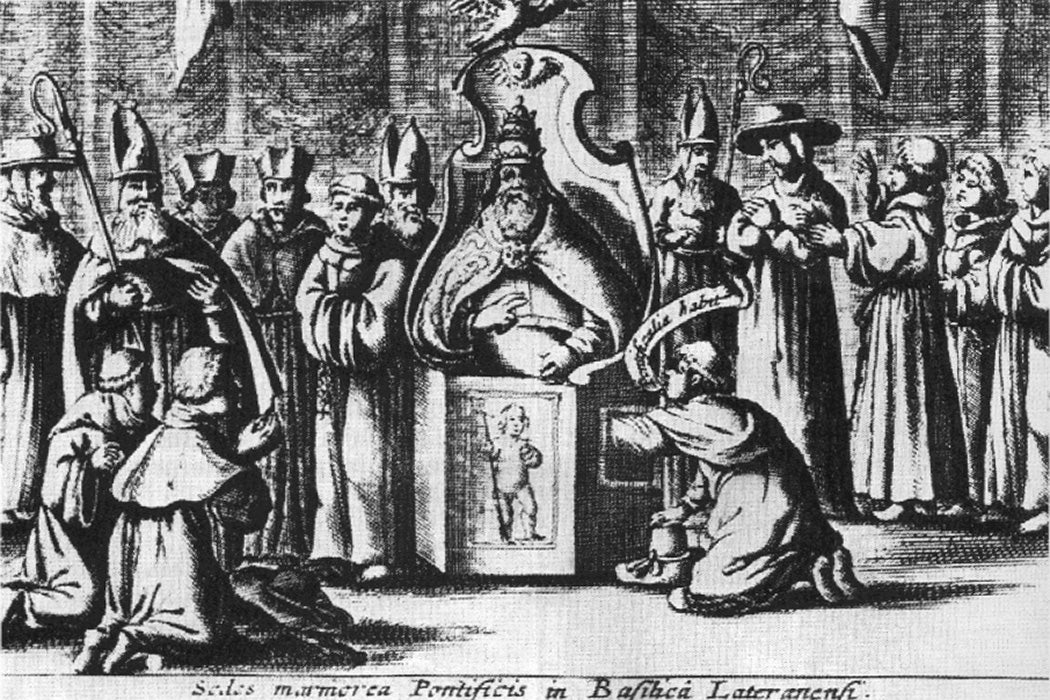Presenting the world’s most (allegedly) awkward and uncomfortable chair.
No, not the Game of Thrones monstrosity made from swords or the first disastrous attempts at constructing an electric chair. According to legend, there used to be a perforated chair—the sedes stercoraria, or “dung chair”—on which the newly elected pope had to sit upon to have his private parts examined. This wasn’t done for health reasons, but to verify that the head of the Catholic Church would be a “biological” male. A visual check ensured that a disguised woman couldn’t infiltrate and seize power at the Vatican.
Blame for this ritual can be laid at the skirts of Pope Joan, who may or may not have existed in the Middle Ages. As the story goes, Pope Joan was a convincing cross-dresser and great academic who managed to rise all the way to the pontificate. She served as pope for two years and invited no suspicion of her true identity until, during a procession from St. Peter’s to St. John Lateran, she went into early labor and gave birth. Religious scholar Thomas F. X. Noble’s study of Pope Joan notes that historians can’t seem to agree on anything about her, including the date and place of her birth or the timeline of her tenure as pope. Some claim she lived in the eleventh century while others place her as far back as the ninth.
However fictitious of a figure Pope Joan may have been, just the mere possibility of her existence was supposed to be enough to frighten the Church into cutting a hole in a chair and subjecting all future popes to an embarrassing ordeal. Allegedly, the elected was made to strip from the waist down in front of an audience and then lower himself onto the chair so a medical practitioner could examine his genitals. Historian Fernand Leroy adds to the story, writing that after the examination, the physician would announce to the crowd, “Duos habet et bene pendentes! [He has two (testicles) and they dangle nicely!]” This may have been enough to perhaps make the new pope wish that he had just stayed a bishop or a cardinal instead.
Weekly Newsletter
Noble writes that the myth of the papal toilet chair is just that—a myth. He argues that it’s the invention of imaginative historians, adding some fun to stodgy Vatican history. He also speculates as to why stories about the sedes stercoraria became obsolete, noting that in the early sixteenth century, “several writers, with grim humor, said that the rite had fallen out of use because recent popes had so many bastard children that their sex was not in doubt.”
One can easily imagine that popes from that time onward would have been relieved to be excused from the experience, had it ever existed in the first place.
Editor’s note: This article was updated to correct a typographical error.







